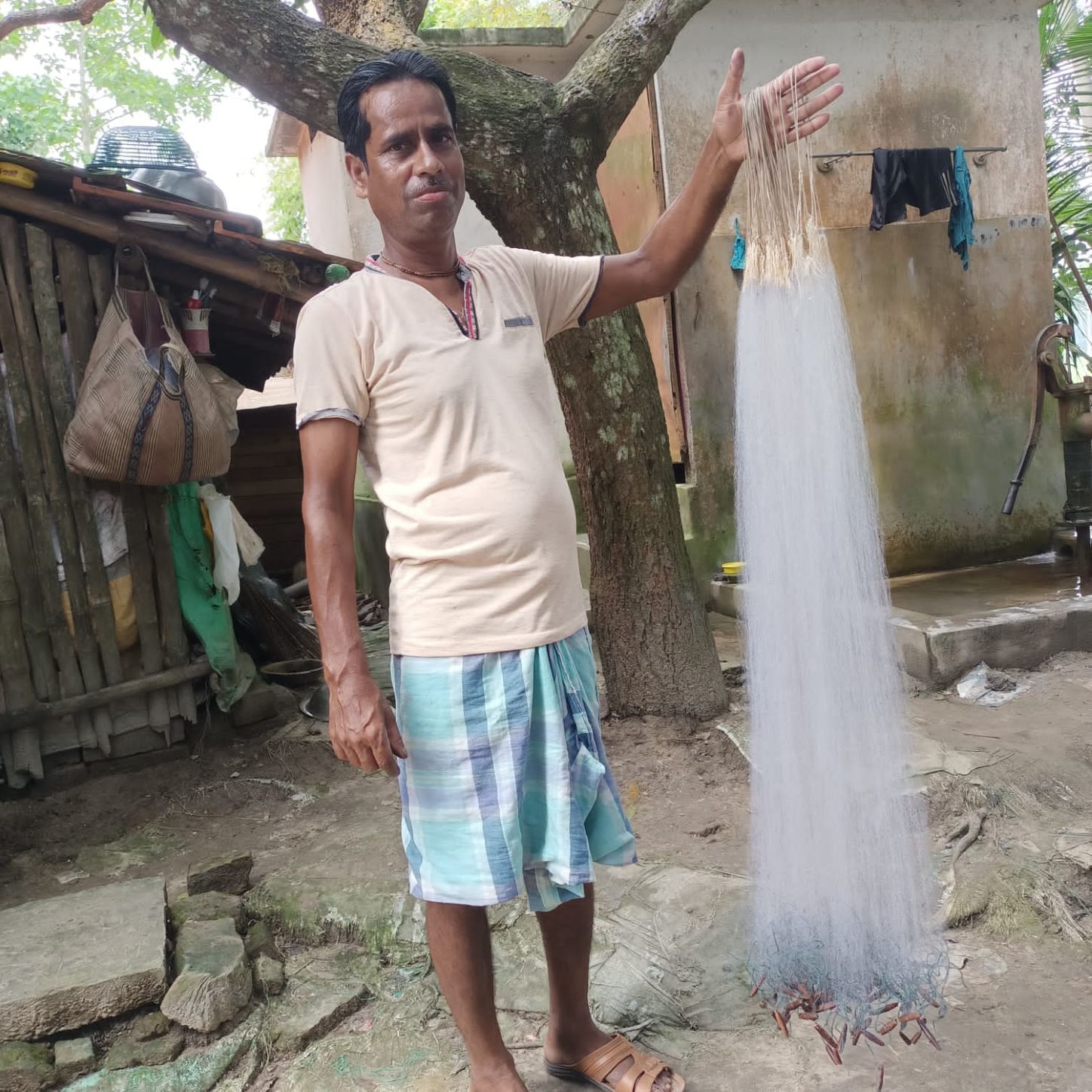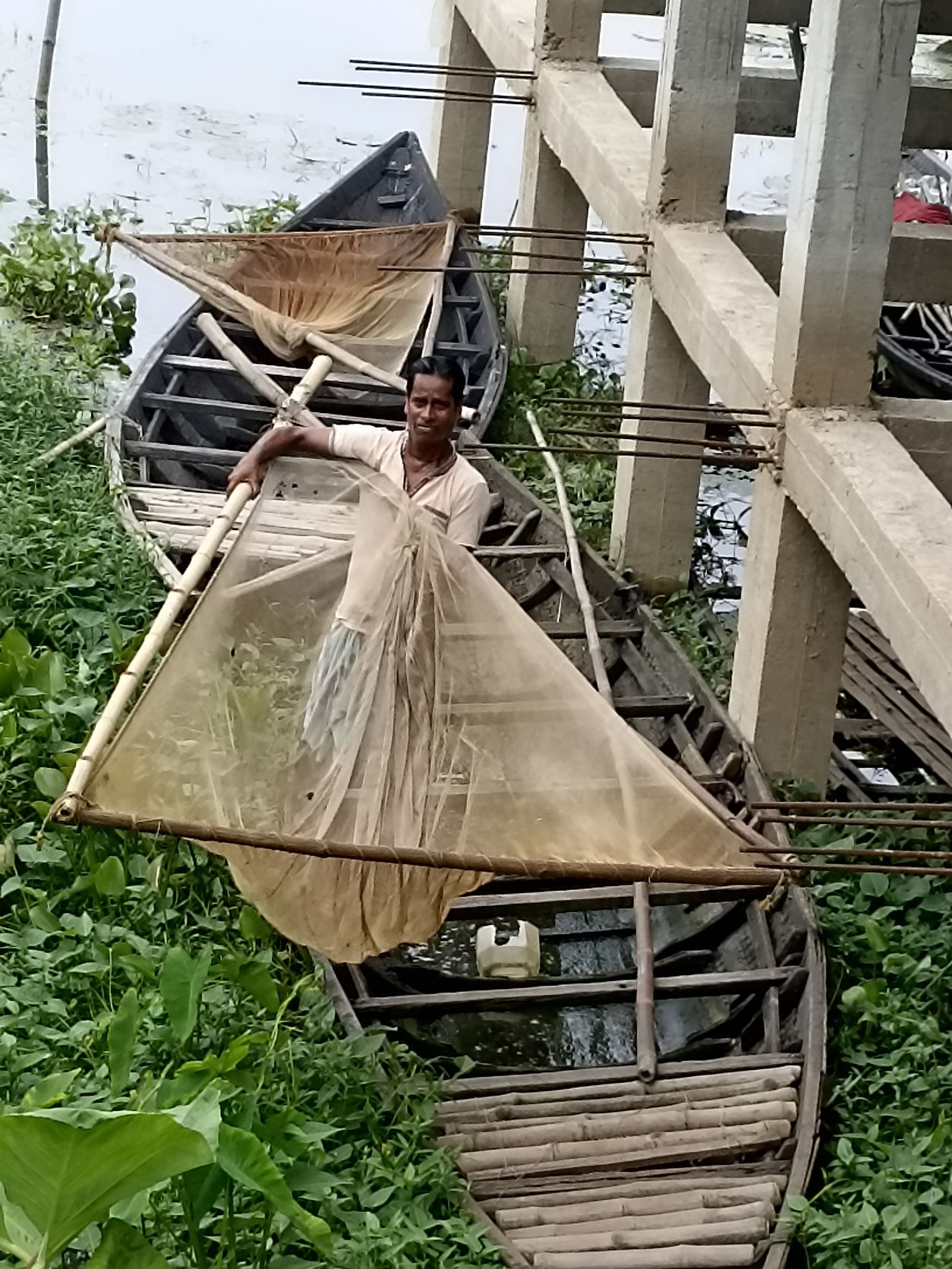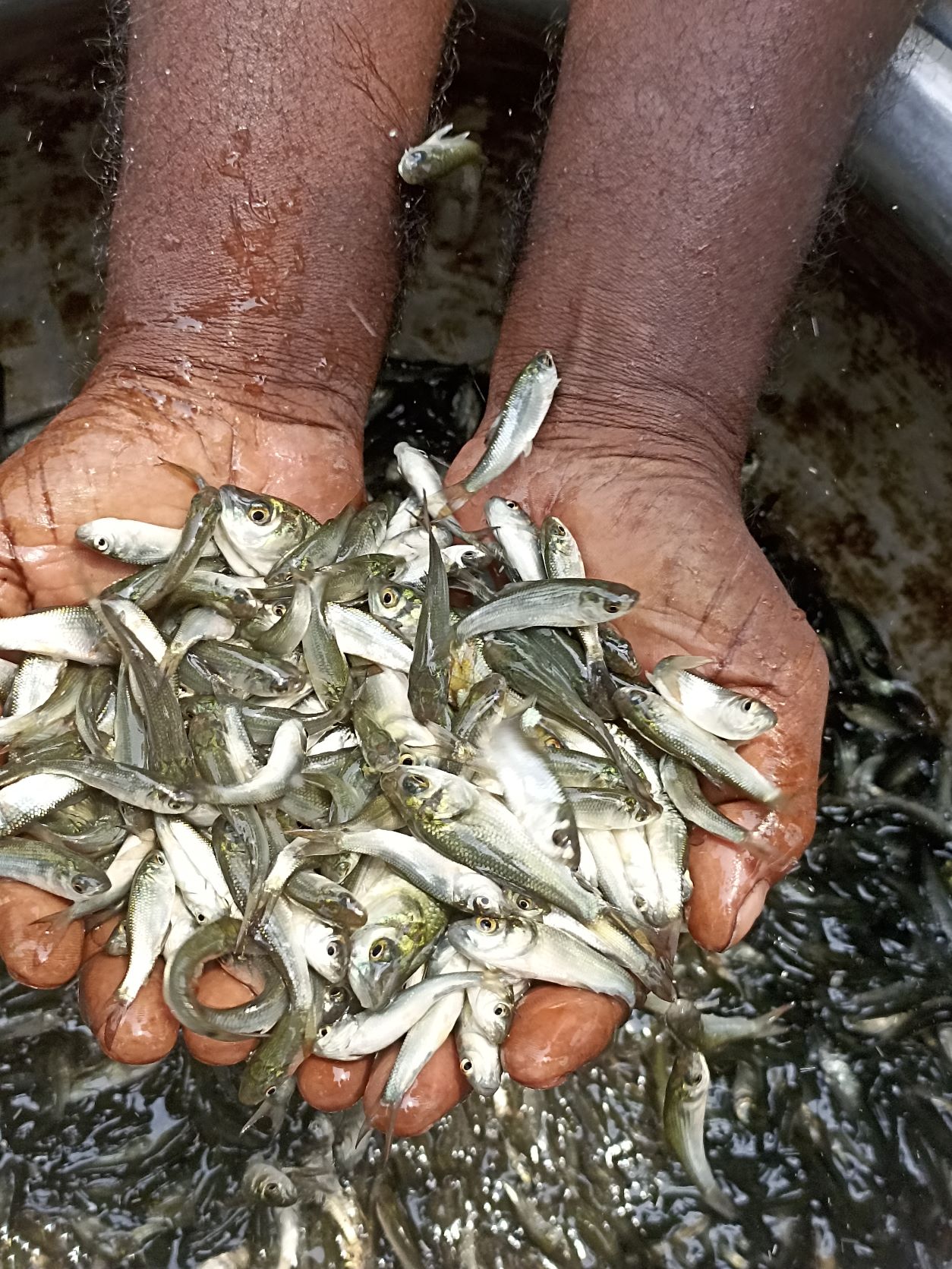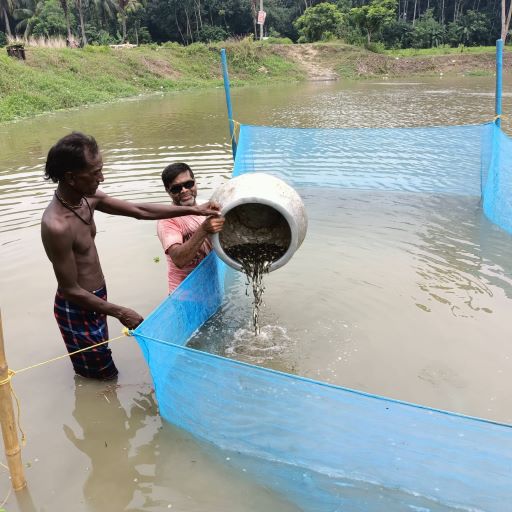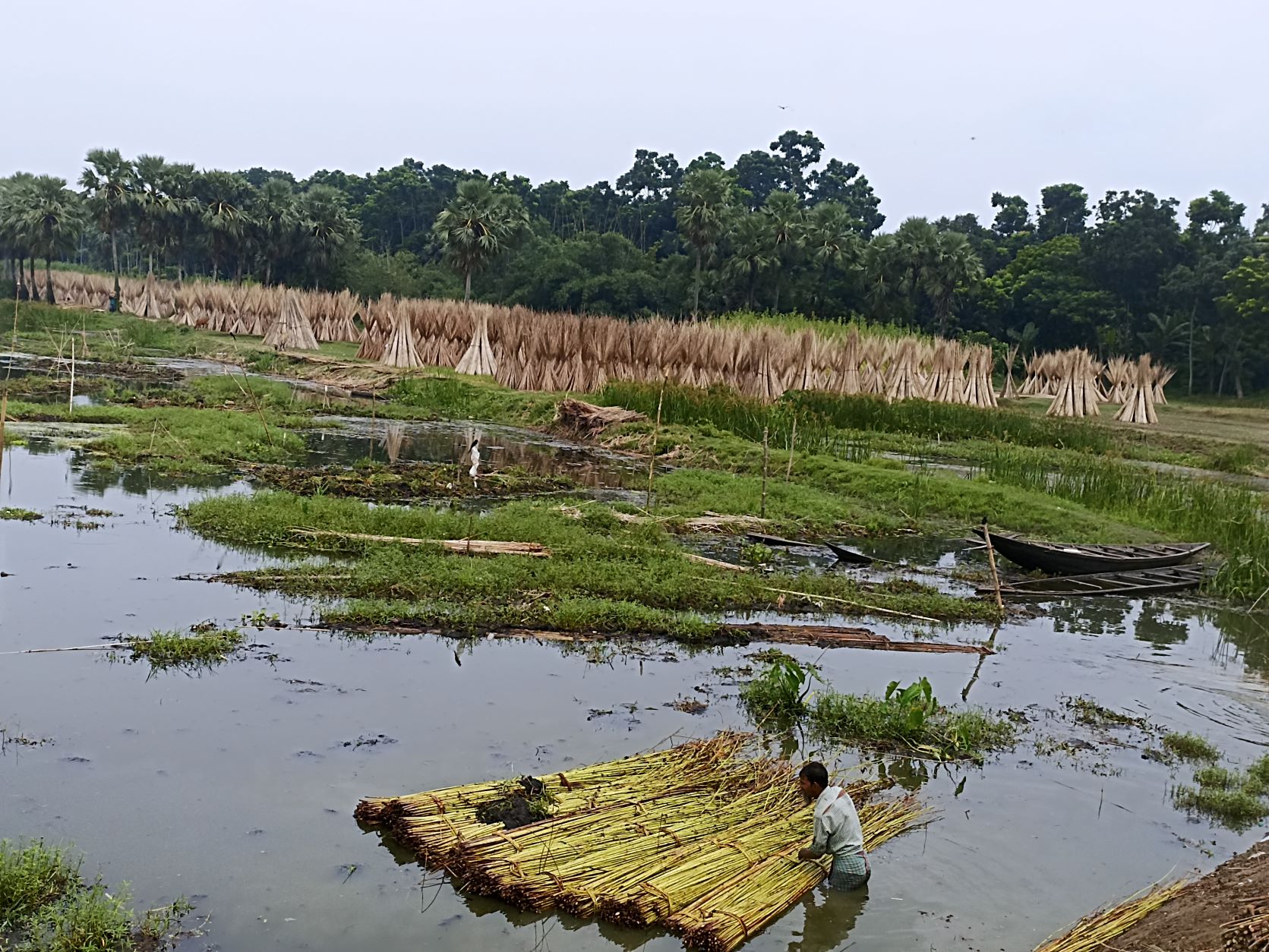Overview
Publications
Recruitment
Intranet
CIFRI Corners'
ICAR-CIFRI has stocked 125kg IMC seed in the nursery pond of Beledanga society on 27th August 2022. The stocking program was conducted under the guidance of Dr B K Das as an initiative under SCSP program of integrated wetland management and production enhancement. It has been noticed that the seed cost one of the major costs in culture-based fisheries in wetlands.
